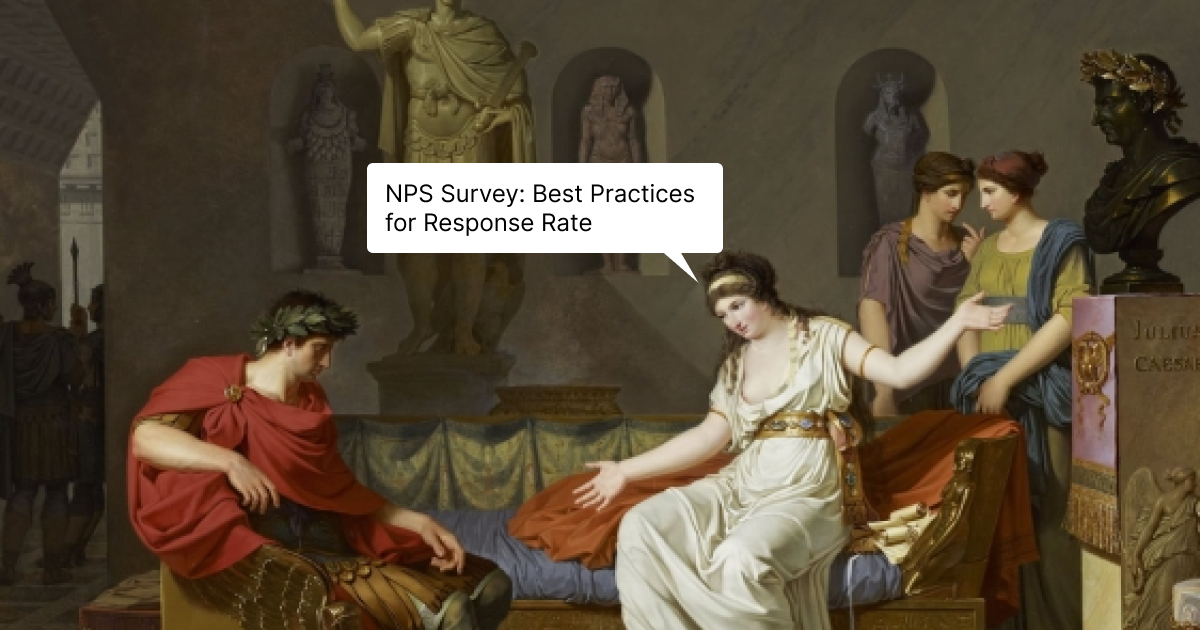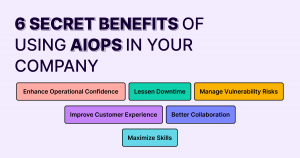Are you aware that only about 20-30% of customers typically respond to an NPS survey? This indicates that you might not be hearing from most of your customers, which could lead to a distorted understanding of their experiences.
As someone who holds an important role in your company, it’s vital to tap into the full power of NPS surveys. In this chat, we’re going to talk about the top methods for increasing your NPS survey response rate, which will help you make smarter business decisions.
So, get ready and let’s dive into a more effective way to connect with your customers.
9 NPS Survey Best Practices
When it pertains to NPS surveys, using the appropriate software is vital for accurate results.
Establishing a regular frequency for conducting NPS surveys helps you stay consistent in gathering feedback.
Remember to close the loop with customers to demonstrate that you value their opinions and are dedicated to making improvements based on their feedback.
1 Use the right NPS Software
Utilizing the appropriate NPS software is crucial for businesses aiming to effectively track customer loyalty and satisfaction levels. By implementing NPS software, you can experience an average NPS score improvement of 10-15 points.
This software enables real-time monitoring of customer feedback, providing you with valuable insights to make strategic decisions promptly. Additionally, using NPS software can lead to a significant increase of 10-20% in customer retention rates.
The actionable insights derived from this software can help optimize customer experiences and boost brand loyalty. Make sure to choose NPS software that aligns with your business goals and allows you to harness customer feedback efficiently to drive growth and success.
2 Set the frequency of the NPS to practise
Consider setting the frequency of your NPS surveys based on industry benchmarks and best practices to avoid survey fatigue and maintain respondent engagement. Monitoring NPS scores regularly is important, but refrain from overwhelming customers with too many surveys.
Balance the timing of surveys throughout the buyer’s journey to gather consistent feedback. Aim for best response rates by notifying customers in advance about upcoming surveys for better participation.
Utilize follow-up questions in your NPS surveys to collect detailed customer feedback and gain a deeper understanding of their sentiments. By following these practices, you can make sure that your NPS surveys effectively capture customer feedback, improve respondent engagement, and provide valuable insights for improving customer experience.
3 Close the loop that you have initiated
To close the feedback loop effectively in NPS surveys, prioritize prompt responses and proactive engagement with customer feedback. This approach strengthens customer relationships and demonstrates a commitment to addressing concerns promptly. By following up on feedback from NPS surveys, you can drive increased customer satisfaction and loyalty.
Responding promptly to all NPS surveys showcases a proactive approach to managing customer feedback. Closing the loop based on NPS feedback helps identify areas for improvement, ultimately enhancing the overall customer experience. Engaging with customers through the feedback loop not only fosters loyalty but also provides valuable insights for strategic decision-making and business growth.
- Strengthen customer relationships
- Drive increased customer satisfaction and loyalty
- Showcase a proactive approach
- Identify areas for improvement
- Obtain valuable insights for strategic decision-making
4 Regular NPS Surveys in-app with transactional emails
Enhance customer engagement and feedback response rates by incorporating regular NPS surveys in-app along with transactional emails. Timing is essential for deploying NPS surveys in-app to capture feedback at pivotal touchpoints in the customer journey.
In-app NPS surveys offer event-triggered delivery, enhancing engagement with personalized interactions. Transactional emails complement in-app surveys, reaching customers through an additional channel for thorough feedback collection.
Utilizing both in-app and transactional email surveys provides a multi-channel approach to gathering valuable insights throughout the customer journey. By combining these methods, you can guarantee a holistic understanding of customer satisfaction and loyalty, ultimately driving business growth through strategic decision-making based on real-time feedback.
5 Share NPS with the team and responders
Sharing NPS results with your team and responders fosters a culture of transparency and collaboration, driving engagement and performance.
When you share NPS survey feedback, prompt responses build customer loyalty and satisfaction. This action also improves customer perception, enhancing brand promotion.
By leveraging promoters effectively, you can boost brand growth and customer loyalty. Additionally, regularly monitoring NPS trends aids in making proactive strategic decisions.
Sharing NPS data with your team not only keeps everyone informed but also empowers them to take collective action in improving customer experience and driving business success.
6 Regular conversation and engagement with customers
Engaging in regular conversations and interactions with your customers is an essential practice for enhancing customer loyalty and satisfaction. By actively listening during these interactions, you can gather valuable feedback to improve your products or services.
Consistent engagement helps build strong relationships, leading to higher customer retention rates. Through regular conversations, you can uncover pain points and areas for improvement in the customer experience.
Utilizing feedback obtained from these interactions can guide strategic decision-making and drive business growth. By prioritizing customer engagement and incorporating their feedback into your strategies, you can effectively improve customer loyalty and satisfaction, ultimately enhancing the overall customer experience.
7 Set the NPS Benchmarks
Setting NPS benchmarks requires a thorough understanding of industry standards and a commitment to surpassing average scores. To effectively set NPS benchmarks, consider the following:
- Industry Standards: Understand the average NPS score for your sector.
- Monitoring Trends: Regularly track NPS scores to identify shifts in customer sentiment.
- Customer Loyalty: Use benchmarks to gauge customer loyalty and retention rates.
- Strategic Decision-Making: Utilize NPS data for informed business decisions.
- Average NPS Score: Aim to exceed industry averages to stand out and drive growth.
8 Customise the NPS Surveys
To optimize the effectiveness of NPS surveys, consider tailoring survey questions based on individual customer interactions for increased engagement and valuable feedback.
NPS survey customization can boost response rates by up to 85%, enhancing relevance and capturing actionable feedback. By consistently customizing survey design and messaging, trust is built, and brand perception among respondents is positively influenced.
Personalizing survey messages with customer names can lead to a 20% higher completion rate and more detailed feedback. Additionally, customizing surveys based on industry standards can improve benchmarking accuracy and aid in setting realistic NPS goals.
These practices not only increase engagement but also make sure that the feedback received is actionable and contributes to a better understanding of your brand perception.
9 Leverage your NPS Surveys
Leveraging NPS surveys can provide valuable insights into customer satisfaction and loyalty, driving strategic decision-making and business growth.
When utilizing NPS surveys, customize your questions to gather specific feedback tailored to your business needs. Sending NPS surveys at ideal times, such as after key touchpoints, can improve response rates and gather more relevant data.
Measure customer loyalty by analyzing NPS scores and feedback, identifying areas for improvement. Additionally, leveraging NPS promoters can help amplify your brand’s growth and reputation within your customer base.
What is Net Promoter Score?
Measuring customer loyalty and satisfaction on a scale of 0 to 10, the Net Promoter Score (NPS) categorizes customers based on their likelihood to recommend a product or service. NPS helps businesses understand customer sentiment, reduce churn, and increase loyalty for growth.
Customers are divided into Promoters, Passives, and Detractors depending on their recommendation likelihood. Calculated by subtracting Detractors’ percentage from Promoters’, NPS ranges from -100 to +100, with scores above 0 showing more Promoters.
Understanding NPS is vital for improving customer experience and driving business success. By grasping the basics of NPS, you can better gauge customer satisfaction and loyalty, paving the way for informed business decisions and improved growth opportunities.
How to Calculate NPS ( Net Promoters Score )?
Calculating the Net Promoter Score involves subtracting the percentage of Detractors from the percentage of Promoters to determine the overall customer sentiment. To calculate NPS effectively, follow these steps:
- Use the NPS formula: % of Supporters – % of Critics = NPS score.
- NPS scores range from -100 to +100, with higher scores indicating a higher likelihood of customer recommendations.
- NPS calculation simplifies customer sentiment into a single score for easy tracking and comparison.
- Understanding how to calculate NPS is crucial for businesses to gauge customer loyalty.
- By calculating NPS accurately, organizations can pinpoint areas for improvement and boost customer satisfaction.
Conclusion
To sum up, applying these NPS survey best practices can assist you in collecting valuable feedback, improve customer satisfaction, and drive business growth. By calculating your Net Promoter Score, aligning goals, and acting on feedback, you can enhance the customer experience and increase loyalty.
Remember to customize surveys for engagement, utilize data-driven insights, and harness the power of promoters to maximize the impact of your NPS surveys. Keep evolving your strategies to continuously enhance and excel in customer satisfaction and loyalty.
FAQ About NPS Survey Best Practices
A good response rate for an NPS survey typically ranges between 20% to 40%, indicating a healthy level of engagement and a representative sample of customer opinions.
The target response rate for NPS should ideally be above 30% to ensure the data collected is statistically significant and reflects the broader customer base accurately.
To encourage responses to your NPS survey, ensure it’s concise, send it at an optimal time post-interaction, and communicate the value of their feedback in improving the service or product.
Improving your NPS survey involves making questions clear and relevant, personalizing the survey request, following up with non-respondents, and incorporating an easy-to-use rating system to increase participation and obtain more accurate insights.





